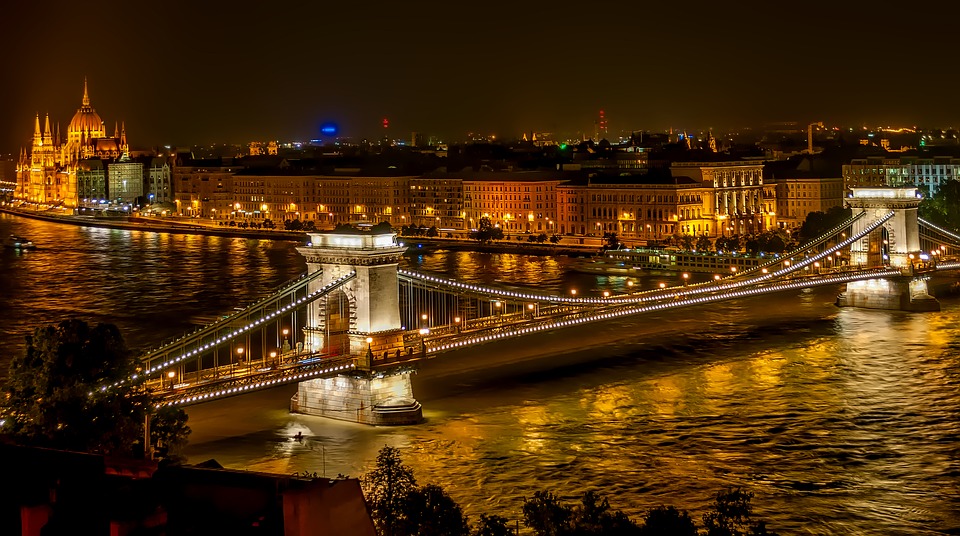A bridge is a structure that allows people or vehicles to cross over a gap, such as a river or a canyon. Bridges are amazing pieces of engineering and architecture. They span gaps that would otherwise be impossible to cross, and they do so in a way that is both graceful and efficient.

There are all sorts of interesting facts about bridges. Here are just a few of them:
The Golden Gate Bridge is one of the most iconic structures in the world. Spanning nearly two miles across San Francisco Bay, it has been an essential part of California’s transportation infrastructure since it opened in 1937. The bridge’s construction was a massive undertaking, and it faced numerous challenges, including high winds and strong currents. Despite these challenges, the lead structural engineer, Joseph Strauss, insisted on the installation of a safety net. The net cost $130,000 and was deemed exorbitant by many, but Strauss believed it was necessary to protect the workers. During the four years it took to complete, 19 men were saved by the net. They became known as the “Halfway to Hell Club.” Today, the Golden Gate Bridge is a testament to human ingenuity, and its safety net is a reminder of the importance of safety precautions.
The Brooklyn Bridge is one of New York City’s most iconic landmarks. Spanning the East River, it has been a symbol of the city’s engineering prowess for over a hundred years. Given its stature, it’s perhaps not surprising that the Brooklyn Bridge has also been the site of numerous daredevil feats. Robert Emmet Odlum, a professional high diver, was the first person to leap from the bridge. Odlum attempted to prove that people could survive a fall through the air by jumping off the Brooklyn Bridge. Amazingly, he survived the 135-foot fall and hit the water safely. However, he died moments later from the impact of hitting the water.
South Korea has one of the highest suicide rates in the world, and Mapo Bridge has long been a popular spot for people to take their own lives. To reduce the number of suicides, the bridge has been unofficially renamed the Bridge of Life and decorated with positive affirmations and sympathetic sculptures. However, rather than deterring people from suicide, this seemingly well-intentioned gesture actually had the opposite effect. The number of suicides on the bridge increased sixfold the following year. While it is impossible to know why this is, it highlights the complex nature of mental illness and the importance of getting professional help if you are struggling. If you or someone you know is in crisis, please reach out for help.
Many bridges around the world don’t serve the traditional purpose of transporting people and goods from one place to another. Because of the time and cost necessary to raise a new bridge, property-related difficulties, or one collapsed end that hasn’t been removed, many bridges are permanently closed. Whatever the reason, these bridge structures make for an interesting sight. In a world where things are constantly moving and advancing, it’s fascinating to come across a structure that stands still. Bridges that don’t go anywhere offer a moment of stillness in our busy lives and provide a chance to appreciate the simple beauty of a structure that was intended to connect us.
Bridge design has come a long way since the days of the Roman Empire. Today, engineers have a wealth of knowledge and experience to draw upon when designing bridges. As a result, modern bridge designs are typically more stable than their traditional counterparts. However, there are still many instances in which traditional bridge designs can be just as effective. In fact, some of the most iconic bridges in the world, such as the Pons Fabricius bridge, were built using traditional designs. Therefore, it is clear that both traditional and modern bridge designs have their merits.
Fairy Bridge, located in China’s Guangxi province, is the largest natural bridge on Earth. The bridge was formed over millions of years as a result of erosion from wind and rain. For centuries, Fairy Bridge was virtually unknown to the outside world, due in part to its remote location. However, in recent years, the bridge was observed by Google Earth users, who began sharing images of the structure online. As a result of this exposure, Fairy Bridge has become a popular tourist destination, with visitors coming from all over the world to view this natural wonder.
Engineering is a profession that demands precision and attention to detail. lives depend on the accuracy of engineers’ calculations. In Canada, engineers receive an Iron Ring to remind them of the importance of humility in their profession. The Iron Ring is in memory of an iron bridge that collapsed twice owing to faulty computations involving iron. The first collapse occurred during construction, and the second collapse occurred when the bridge was reopened to traffic. No one was killed in either collapse, but the incident served as a reminder of the potential consequences of errors in engineering. The Iron Ring is a sobering reminder of the responsibility that engineers have to society, and it serves as a reminder to always exercise humility in their work.
The Amazon River is the largest river in the world, with a length of over 6,000 kilometers. The river is so wide that it is impossible to build bridges across it. Although it is not possible to drive across the river, there are ferry services that operate between some locations.
The world’s longest and highest glass-bottomed bridge was opened in China on August 20, 2016. The Zhangjiajie Grand Canyon in the Hunan Province is home to the suspension bridge, which extends over 1,400 feet above the valley. The record-breaking structure offers visitors unparalleled views of the canyon below. The bridge is 1,000 feet long and can handle 8,000 people per day.
Bridges are typically built from stone, steel, or concrete. However, in some parts of the world, bridges are made from the roots of living trees. The Root Bridges take a long time to build (at least 15 years), but they get stronger over time and can last for centuries. The process begins by carefully selecting two young trees that will grow together to form the bridge. The tree roots are then interwoven and bound together with creepers. As the trees grow, the roots begin to fuse together, forming a strong and sturdy bridge. While Root Bridges take a significant amount of time and effort to construct, they are incredibly durable and can provide a vital crossing point for generations to come.
Woody Harrelson was detained in 1996 for climbing the Golden Gate Bridge to hang a banner protesting the demise of the Redwood Forest. The forest had been clear-cut by the Pacific Lumber Company, and Harrelson was determined to raise awareness about the issue. He chose the Golden Gate Bridge as his protest site because it was a highly visible location that would attract media attention. The Redwood Forest has since been designated as a national monument, and Harrelson’s protest is credited with helping to raise public awareness about the issue.
Although earthquakes are a relatively rare cause of bridge collapses, their impacts can be devastating when they do occur. Many deaths have been caused by collapsed bridges due to earthquakes. The causes of these collapses can be various, such as poor design or construction, or inadequate maintenance. In some cases, the collapse is due to a combination of factors.
The Bonner Bridge in North Carolina has been the site of dozens of truck accidents since it opened in 1963. The problem is that the bridge has a clearance of only 11’8″, which is not enough for many semi-trucks to pass under without hitting the top of the bridge. As a result, there have been numerous accidents over the years, some of which have resulted in fatalities. In addition to the danger to human life, these accidents have also caused significant damage to the bridge itself. In fact, the Bonner Bridge is now considered to be one of the most dangerous bridges in the United States. If you are driving a truck in North Carolina, it is essential to know the height of your vehicle and the clearance of any bridges that you will be crossing. Otherwise, you could end up being involved in a serious accident.
The Golden Gate Bridge is an iconic structure that has come to symbolize the city of San Francisco. Though it is now famous for its orange color, this was not the original plan. When the bridge was built, orange was only intended to be used as a sealant. The main paint job was to be black and yellow stripes, which would be more visible to passing ships. However, it was quickly discovered that the orange color worked much better in the foggy conditions that are common in San Francisco. As a result, the decision was made to keep the orange paint, and the Golden Gate Bridge has been one of the most recognizable landmarks ever since.
The water bridge across the river Elbe in Germany is an incredible feat of engineering. Spanning 1km in length and 34m in width, it allows huge cargo ships to cross the river without having to go around. The bridge was completed in 1992 and has been a vital part of the local economy ever since. In addition to reducing travel time for cargo ships, it has also helped to increase tourism in the area. The water bridge is an impressive sight and is well worth a visit if you are ever in Germany.





